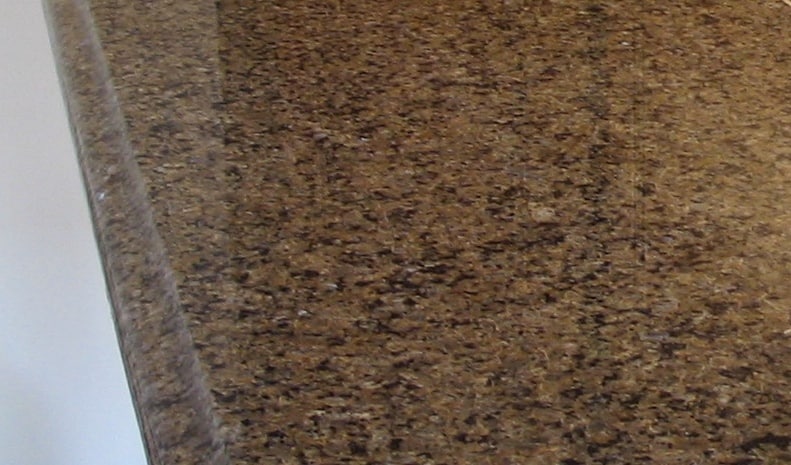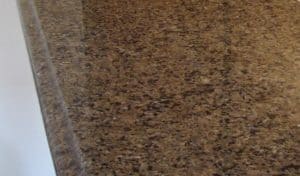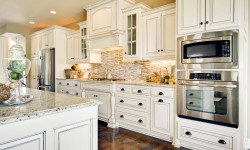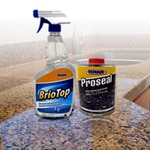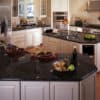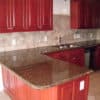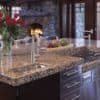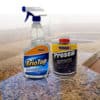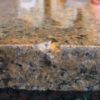Putting an attractive bevel on a countertop enhances its beauty, while taking off the sharp edge makes it safer. However, beveling a countertop is no easy job. It’s one that even skilled DIY homeowners stay away from for two reasons: Most of us don’t have the right tools and few have the requisite experience.
Is Beveling a DIY project?
Simply put, a solid surface, quartz or granite countertop is an expensive an investment that most don’t want to put at risk by attempting a DIY bevel job. It's a really good idea to hire a qualified contractor for this type of job, or your beveled countertop runs the risk of not looking up to par.
For reference, or if you’re the rare guy or gal with the skills and tools to do the job properly, here’s how to approach putting a beveled edge of several common types of countertops.
Beveling a Solid Surface or Quartz Countertop
This is the easier type of countertop to put a beveled edge on. Use a quality, dependable router with the appropriate router bit.
You might want to practice on a piece of wood, perhaps a 2x4 or 2x6, to see what the bevel looks like and how the router will function. Solid surface material, quartz, and granite countertops are all much, much harder than wood or butcher block countertops, so take that into consideration.
If the countertop has not been installed, clamp it securely to a set of sawhorses. Pad the clamps to prevent damage to the countertop surface.
Beveling a Granite Countertop
There are two basic ways to put an edge on a granite countertop. The first is to purchase a semi-automatic flat edge machine at a cost of $4,500 to $6,000. Since this isn’t a great option unless you’re a pro who intends to use it repeatedly, we suggest an alternative.
It’s possible to bevel the edge of a granite countertop using an electric masonry polisher. Start with a very coarse wheel such as 150-grit to do the heavy work. Switch to increasingly finer grits until you complete the job. The progression might look like this: 150-grit, 300-grit, 500-grit, 800-grit, 1500-grit and 3000-grit.
The problem is that there is no way to ground the edge at a uniform angle. You’ll be relying completely on your own steady hand. Unless you’re skills are a cut above those of most homeowners with DIY capabilities, you’ll end up with an edge with a varying angle and likely wish you hadn’t started the project in the first place. We can not recommend strong enough that you get professional help with this job. We don't want to see you damage your beautiful (and expensive!) countertops.
This is why we suggest leaving the job of adding a bevel to a countertop to a pro with a semi-automatic flat edge machine.
Safety First:
If you do this type of grinding, wearing safety equipment is essential. This includes safety goggles and a quality paper mask or respirator.
This will be a very dusty job, so you might want to clear out the room and lay down tarps to make cleaning up much easier.



